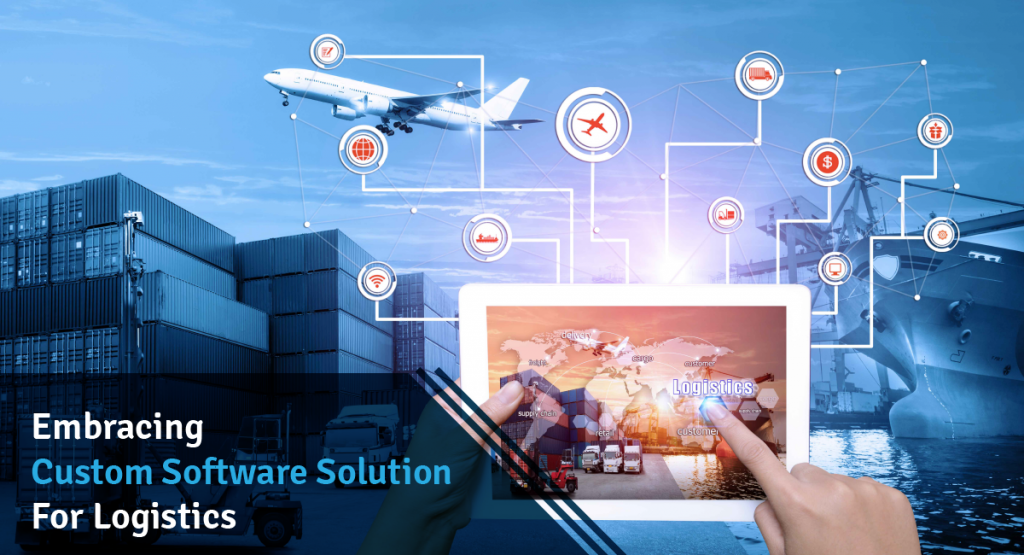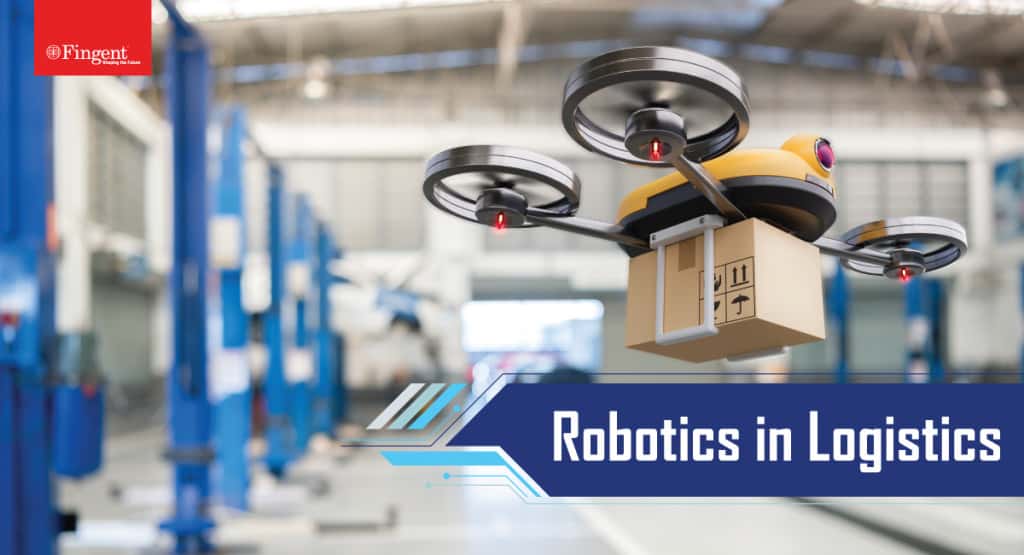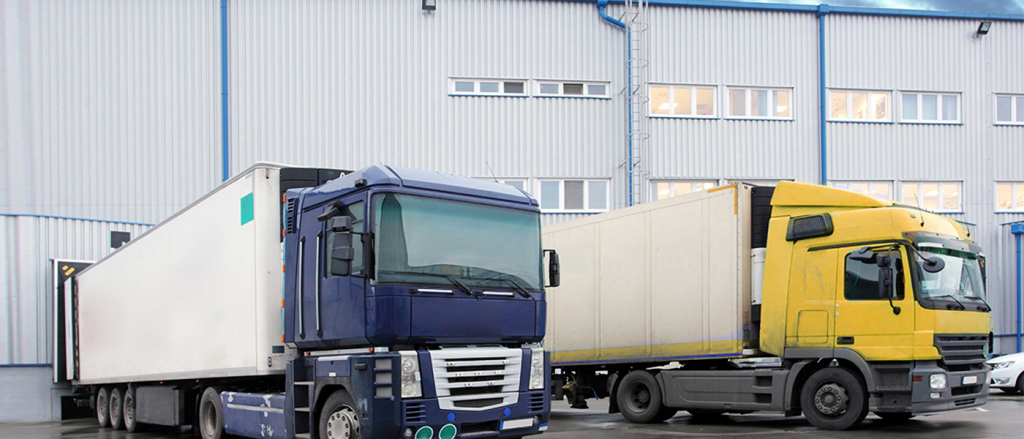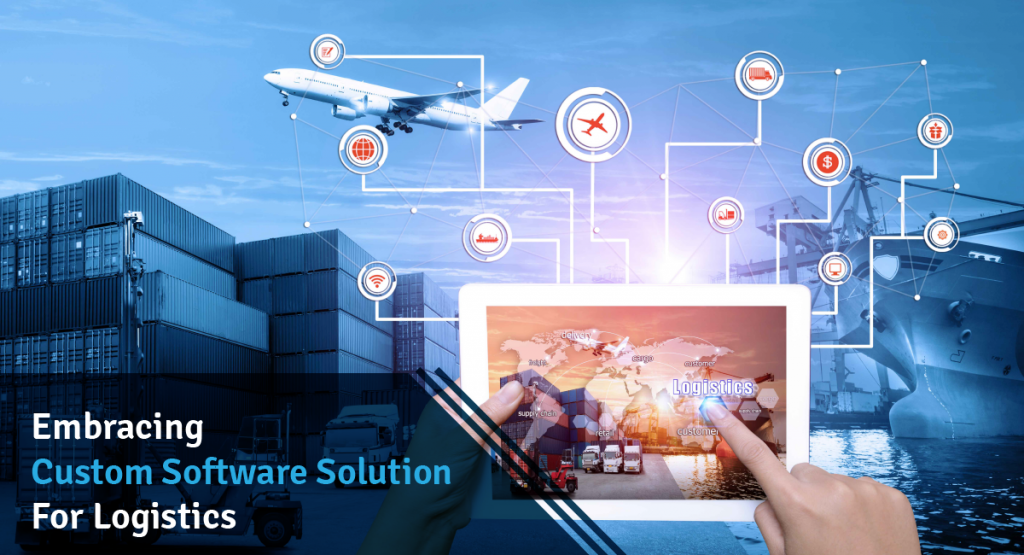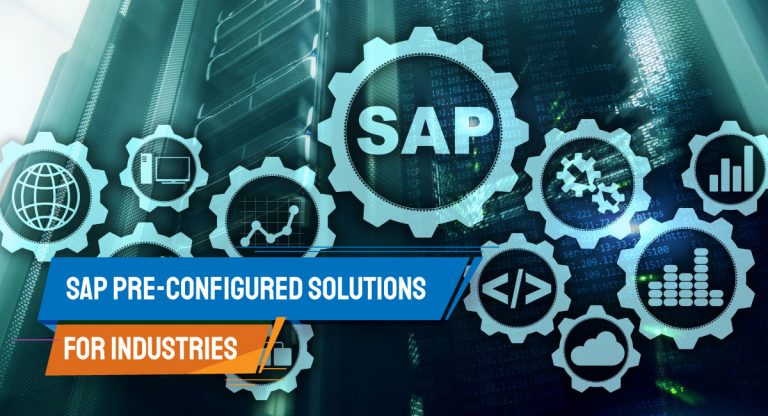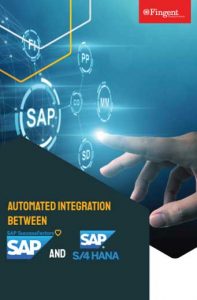Category: Logistics and Supply Chain
SAP S/4HANA is a catalyst for business success, weaving its transformative power across the ERP landscape. SAP S/4HANA is more than just any software; it’s a realm of possibilities. It is like a digital fortress that integrates and orchestrates your supply chain, ensuring harmony and efficiency throughout your organization.
With a single source of truth, it empowers organizations to make informed decisions based on accurate, up-to-the-minute insights. It’s like having a trusted compass that illuminates the hidden paths of your operations, empowering you to confidently navigate the ever-changing terrain of the business landscape.
Understanding SAP S/4HANA – A Visionary Leap Into The Future
SAP S/4HANA is not your ordinary ERP solution. It harnesses the power of in-memory computing, real-time analytics, and a simplified data model to deliver a seamless and intelligent ERP experience. It is a technological marvel that blends speed, agility, and simplicity into a single transformative platform.
The shift from traditional SAP ERP systems to SAP S/4HANA marks a significant milestone in the ERP landscape. It represents a move from a row-based data model to an in-memory, columnar-based data model, resulting in lightning-fast data processing and real-time analytics.
With the transition to SAP S/4HANA, businesses unlock a plethora of benefits. They gain real-time insights for faster decision-making, simplified processes for improved efficiency, and intelligent technologies for enhanced automation and predictive capabilities. It’s like upgrading to a futuristic command center that propels your business into a new realm of success.
Let’s begin by unveiling the key features and capabilities that make SAP S/4HANA shine.
- It brings the power of real-time insights, allowing businesses to make decisions based on up-to-the-minute data.
- SAP S/4HANA simplifies processes, reduces data redundancies, and eliminates complexities to streamline operations.
- It leverages advanced technologies such as artificial intelligence (AI), machine learning, and predictive analytics to unlock automation, insights, and predictive capabilities.
Read more: A Beginner’s Guide To Implementing SAP S/4HANA
Key Benefits of SAP S/4HANA
1. Grasp The Pulse of Your Business at Any Given Moment with Real-Time Analytics.
With its in-memory computing capabilities, SAP S/4HANA processes massive amounts of data in real-time, allowing for faster and more responsive operations. With real-time analytics, you have the power to respond swiftly to changing market dynamics, identify emerging trends, and seize opportunities before they fade away. It’s like having a nimble and swift chariot that propels your business forward, helping you stay ahead of the competition.
2. Enthralling User Experience
SAP S/4HANA’s intuitive interface and personalized dashboards transform ERP navigation into a delightful journey. It’s like stepping into a realm of effortless elegance, where tasks are completed with grace and efficiency, where your teams can work seamlessly, unlocking their full potential and driving productivity to new heights.
3. Declutter Your Landscape with a Simplified Data Model
SAP S/4HANA can help you bid farewell to the tangled webs of complexity and data redundancies. It enables you to declutter your business landscape, allowing you to focus on what truly matters—innovation and growth. With a simplified data model, your organization gains agility, flexibility, and the ability to adapt swiftly to changing business needs.
Now that you are aware of the business benefits let’s discuss how you can prepare for SAP S/4HANA implementation.
Prepare For SAP S/4HANA Implementation
With the right foundations in place, organizations can embark on their SAP S/4HANA implementation with confidence, ready to unlock the full potential of this transformative platform.
1. Assessing Business Readiness:
Assessing the organization’s readiness for SAP S/4HANA implementation is like taking stock of your supplies before embarking on a grand expedition. Evaluating data readiness ensures that your information is accurate, complete, and compatible with the new system. Additionally, allocating resources appropriately – including skilled personnel and budget – ensures that you have the necessary support to navigate the implementation journey smoothly.
2. Building the Implementation Team:
On a voyage, each member has a vital role to play. Project managers steer the entire implementation process. Functional consultants bring their expertise in specific business areas, ensuring that SAP S/4HANA meets your unique requirements. Technical experts handle system configurations, integrations, and customizations. Together, this cross-functional team brings together diverse perspectives, fostering synergy and ensuring that all aspects of the implementation are addressed comprehensively.
3. Chart your Course by Defining Implementation Goals and Scope:
Defining clear goals and scope for the SAP S/4HANA implementation provides a clear direction and prevents aimless wandering. By identifying key business processes, you prioritize areas that will benefit most from the new system. This focused approach optimizes time and resources enabling effective project planning and increasing the likelihood of a successful SAP S/4HANA implementation.
Six Phases of SAP S/4HANA Implementation
Each of the following well-defined phases of the SAP S/4HANA phase brings your organization closer to harnessing its and unlocking new levels of efficiency, agility, and competitive advantage:
Phase #1 Project Planning and Preparation:
Planning and preparation are like laying the foundation for a solid structure. Activities in this phase include creating a detailed project plan, establishing timelines, and defining deliverables. By clearly outlining project objectives, tasks, and responsibilities, organizations ensure a structured and well-organized implementation process.
Effective stakeholder communication is vital during this phase, keeping everyone informed and engaged. Change management strategies are implemented to address any resistance to change, ensuring the smooth adoption of SAP S/4HANA.
Phase #2 System Installation and Configuration:
System installation and configuration start with assessing hardware requirements and designing the system landscape, ensuring optimal performance and scalability. The SAP S/4HANA system is then installed, configured, and integrated with other systems, creating a cohesive IT ecosystem. This phase requires careful consideration of factors like network infrastructure, security, and software installation.
Phase #3 Data Migration and Conversion:
Data migration and conversion are like transferring belongings to a new home. Legacy data is extracted, transformed, and loaded into the SAP S/4HANA system. This process involves data cleansing, eliminating duplicates, and ensuring data accuracy. Data validation is crucial to verify the integrity and consistency of migrated data.
Phase #4 Customization and Configuration:
This phase is like arranging furniture in a new space. Configuration involves setting up master data, defining workflows, and configuring system functionalities. This phase ensures that SAP S/4HANA aligns with the organization’s unique processes, enabling efficient operations and improved user experience.
Phase #5 Testing and Training:
Testing and training form the backbone of a successful SAP S/4HANA implementation. Thorough testing is conducted to validate the system’s functionality, performance, and data accuracy. This includes unit testing, integration testing, and user acceptance testing.
Training programs are designed to equip end-users with the necessary skills and knowledge to effectively utilize SAP S/4HANA.
Phase #6 Go-Live and Post-Implementation Support:
Going-live is like opening the doors to a new facility, enabling users to work with real data. Post-implementation activities include monitoring system performance, addressing user feedback, and providing ongoing support. Continuous improvement initiatives and enhancements are implemented based on user experience and evolving business needs. Regular system maintenance and updates ensure the system’s optimal performance and long-term success.
These are some best practices and lessons learned from previous SAP S/4HANA implementations. They offer valuable insights that can guide your organization toward successful implementation. These can help you avoid common pitfalls and maximize the benefits of SAP S/4HANA.
Read more: A Simple Guide To Handling Common SAP Errors and Troubleshoots
Strategies You Can Use to Overcome Common Challenges
Challenges during SAP S/4HANA implementations can vary, but some common ones include data migration complexities, resistance to change, resource constraints, and technical integration issues. To overcome these challenges, organizations should:
- Engage experienced consultants and leverage their expertise.
- Invest in data cleansing and migration tools to streamline the process.
- Prioritize change management activities and communicate the benefits of SAP S/4HANA.
- Allocate sufficient resources and budget for implementation and post-implementation support.
- Collaborate closely with SAP experts and leverage their guidance and best practices.
- Monitor the implementation progress regularly and adapt the plan as needed.
How Can Fingent Help?
Fingent can provide comprehensive services to deploy SAP S/4HANA for better supply chain management. We at Fingent offer consulting services to assess your supply chain management requirements and design a customized SAP S/4HANA implementation strategy. Our advisory services provide expert guidance on how to optimize your operations and drive digital transformation.
Are you currently using an older version of SAP ERP? If so, we can analyze your existing system, assess the impact of the conversion, and guide you through the conversion process.
Fingent leverages SAP Leonardo’s intelligent technologies, such as machine learning, IoT, and analytics, to enhance your supply chain management processes. With our expertise in SAP S/4HANA and supply chain management, we can guide you through the entire deployment process, from strategy and implementation to ongoing support.
Reach out to us, and let’s work magic for you.
Stay up to date on what's new

Featured Blogs
Stay up to date on
what's new



Talk To Our Experts
The onset of globalization has encouraged business operations on an international scale. It offers companies the opportunity to reach new customers in new markets. Exposure to unknown markets and sometimes even known markets can expose businesses to greater competition and greater risk. However, efficient management of the supply chain can do away with many of these risks and put you on the path to success.
The challenges in the supply chain can include being unsure of the reliability of your suppliers, and their quality, cost, lead time, lot size, and more. Your business will surely profit if you had a way to monitor your supplies and the risks to your business.
Yes, clear visibility is crucial.
This is where custom software can benefit your business!
Custom software equips you with a way to collect, organize, and monitor the supplier-related information that is most meaningful to your business. This blog discusses which functions of the supply chain can be better managed with custom software and also talks about the benefits this can bring to your business.
Why Is Customized Supply Chain Management Software Important?
Efficient management of the supply chain depends primarily on data gathered at each stage of the supply chain process. The success of the business hinges on the way companies use those insights to make decisions that optimize demand, supply, inventory, and deliveries.
That is why custom software is essential to managing the supply chain. Custom software can enable organizations to make better use of their data as it gives structure to the information already in their possession.
Through the use of custom software solutions, companies can identify faults in their supply chain process. Such visibility can help them make better inventory decisions or inform their customers of the shipping status for their confirmed orders.
Essentially, custom software is instrumental in improving business operations and relationships with both customers and suppliers.
Read more: Build or Buy Logistic Software: An End To The Prolonged Discussion
Manage Key Supply Chain Functions with Custom Software
Every business is unique in its functions. A software can address the specific company challenges only when customized and tailor-built after crucially analyzing the workflows and industry pain points. Here are a few to look into.
- Raw material acquisition: Supply chain management is a journey, and purchasing is at the beginning of that journey. Purchasing includes sourcing raw materials and other resources. Custom software enables smooth coordination with suppliers to deliver the material without any delays requires.
- Planning and forecasting: The operations team must anticipate the possible market demand and the number of units for production. Over-anticipated demand can result in excess inventory costs. If it is underestimated, then the company will not be able to meet its customer demand and thus lose revenue. Custom solutions for planning and forecasting can help the operations team to anticipate demands more accurately.
- Warehouse arrangement: Supply chain management requires warehouse arrangements till it is shipped for delivery. If the products are delivered outside the country or state limits, there will also be a need for outstation warehouses. Custom software can optimize logistics to reach end-point delivery without any glitches.
Advantages Of Custom Software in Supply Chain Management
1. Increased transparency throughout the supply chain
Knowing exactly where your item is at any given time is important for all businesses as it allows you to sell the item before it even reaches your warehouse. Custom software can help you sell this way because it can pinpoint the exact location of your item and the time that it will reach your warehouse.
This will allow you to provide a guarantee to your customer that he will receive the product he purchased. Streamlining the supply chain will help achieve faster response times and increase customer loyalty.
2. Efficient inventory management
With the help of custom software, you can sell your item while it is on the move or as it is in the making. It can help you estimate how many items you must produce, eliminating excessive production.
3. Supplier management
You can keep a good relationship with your suppliers with custom software. Real-time data will allow you to know if you are running out of stock or if your tools and equipment need repair or replacement. This data will help you contact your suppliers immediately and thus minimize any potential delays.
You will also have details such as account receivables and other information at your fingertips when dealing with your suppliers. This will ensure that you are up to date with payments and discounts. As a result, you notice that your communication and cooperation with dealers and vendors improve considerably.
4. Streamline Processes
Custom software will create highly streamlined processes for supply chain management, especially for businesses that operate from different locations across the globe.
Fully customized software enables companies to accumulate all business data in one centralized location. Employees greatly benefit from this as they can now gain access to the latest versions of data, even if they are accessing it from multiple locations or branches.
5. Un-bottleneck your supply chain
Bottlenecks in the supply chain are a direct result of the ineffective system in place that does not allow teams in different locations to communicate and align statuses to fulfill overall objectives. Companies that experience such bottlenecks miss opportunities and lose customers because they are unable to provide what their customers want.
An unsatisfied customer walks out on you and straight into the open arms of your competition. If you are beginning to notice lower satisfaction rates, numerous complaints, or bad reviews from the customers, it is time to explore custom software that can give you a business-targeted approach to customer experience.
When a business looks to meet or exceed customer demands, they have to rely heavily on its supply chain. Internal bottlenecks can slow down the entire process and risk order fulfillment. To prevent such bottlenecks, a business must understand what causes them and how to prevent them.
Custom software can help a business identify such bottlenecks and thus help efficiently manage the supply chain.
Read more: Custom Fleet Management Software in Supply Chain
Save Money, Time, and Your Business!
It is clear that custom software comes with many benefits. It is also obvious that it saves money with time. While off-the-shelf software may come with a lower initial cost, investing in custom software will give more benefits to the supply chain management cycle. It improves sales functions and boosts productivity.
Custom software that is fully optimized to the supply chain will improve business function in a way no off-the-shelf software can. Fully optimizing the supply chain process can be lean and seamless through the use of custom software. If the business growth process is left unchecked by the off-the-shelf software solutions it can become highly chaotic. Custom software gives companies a higher level of control over all supply chain operations while taking control over the growth process.
A company that is digitally driven by custom software automatically enables a more proactive and open business. If this is what you want for your business, give us a call.
Our experts at Fingent thrive on creating custom solutions for our clients. They will be happy to talk through the game plan with you and show you how your business can excel with custom software for your supply chain.
Stay up to date on what's new

Featured Blogs
Stay up to date on
what's new



Talk To Our Experts
The COVID-19 pandemic has created an imbalance between the supply and demand of the goods thereby disrupting the supply chain globally. That said, it has also amplified the need for technology tools to manage the supply chain challenges as the possibility of lockdowns in the future can’t be overlooked.
With the increasing demand for autonomous solutions, it is not surprising to see companies investing in supply chain technologies. According to Gartner, by 2023, 50% of the global eCommerce companies will invest in the real-time supply chain, AI, and advanced analytics solutions.
Challenges in the Supply Chain
1. Labor and material shortages
2020-21 witnessed several layoffs and quarantine putting the market in flux globally. Leaders not only face delegation woes but also find staffing key positions within procurement and supply chain ops problematic. Leaders will have to rely on technologies and automation to create cohesion and shift focus to smaller more concentrated procurement teams.
According to the Institute of Supply Chain Management report, every key commodity is either scarce or up in price leading to shortages and complexities to supply chain management. In other words, the material shortage will continue and companies can expect persistent problems through 2022.
2. Rising freight costs
In 2021, trucking and intermodal transport shot to new highs while spot prices doubled across the board: van (+18%), reefer (+25%), flatbed (+27%). Additionally, sea freight price and air freight price skyrocketed as well making it difficult to move freight in any capacity.
Thus, fluctuation in freight price will remain one of the biggest challenges the supply chain industry will have to face in 2022.
3. Port congestion
In the last two years, there have been wait times for ships headed into ports across the world. In October 2021, over 50 container ships were amassed outside Los Angeles and Long Beach to unload cargo from China. That said, gridlock especially at overseas ports creates delays as ships look to obtain cargo. So, bottlenecks at both ends cause additional lead time for import-export operations ultimately disrupting the domestic supply chains.
While port congestion isn’t a new problem, according to The National Customers Brokers & Forwarders Association of America (NCBFAA), 2022 could see historic wait times and supply chain bottlenecks.
4. Problems related to demand forecasting
While the global shutdown in 2020 skewed supplier data to a great extent, 2021 saw some recovery making the data relatively unreliable as a standard for future forecasting. This has resulted in no proper benchmark for supply chain leaders to follow.
As the unprecedented demand grows, meeting it remains a challenge. So, supply chain leaders will have to rely on trending data to predict the year considering the previous benchmarks for everything from inventory to budget and pricing.
Read more: Logistics Management Software – Everything You Need To Know!
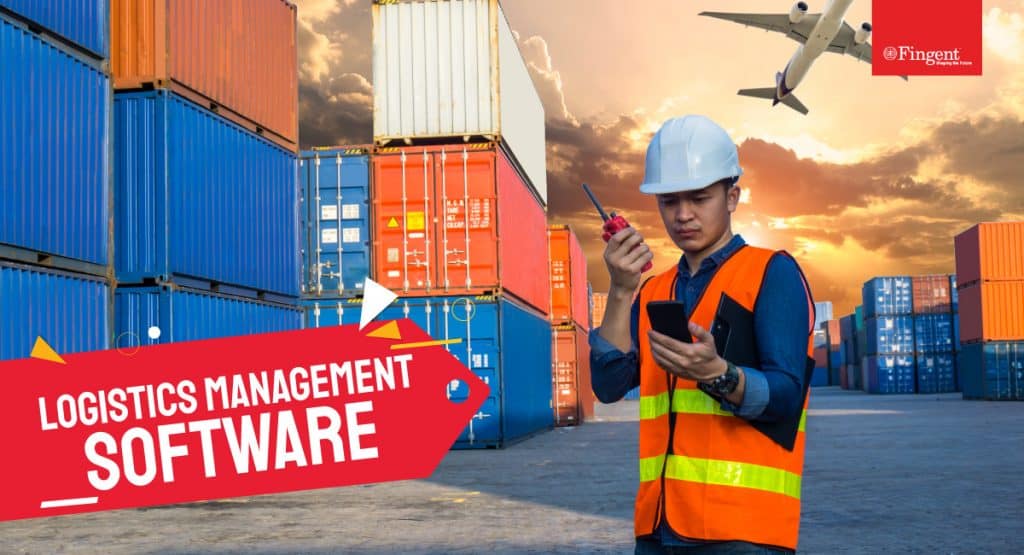
While this adjustment is completely different for those who rely on the last two to three years trailing data to estimate demand forecasting, it is a challenge that requires forethought.
Here are five technologies that will help advance your business in 2022.
1. Robotic Process Automation (RPA)
According to Deloitte, RPA will see strong growth in the next five years specifically in the supply chain operations that include lower-value, potentially dangerous, or high-risk tasks. Robotic technology applications include trains and trucks, automated vehicles like drones, last-mile deliveries, and storage and retrieval systems (ASRS).
The use of RPA can achieve the following objectives:
- Improve productivity and efficiency
- Reduce re-work and risk rates
- Increase employee safety
- Perform repetitive and mundane tasks so humans can work more useful tasks
- Increase revenue by improving order fulfillment and delivery speed
New pricing structures are helping companies consider investing in automation. That said, the RaaS (Robotic and a Service)-type model allows providers to lease units through a monthly service contract instead of customers paying a huge capital up-front.
2. Cloud computing and AI
As supply chains generate big data, cloud-based AI can be used to turn that data into insights. Cloud computing along with AI has transformed the way the supply chain operates and in near future its abilities will only grow in complexity.
Cloud and AI systems can use past trends and market indicators to achieve the following processes;
- Powering automation process
- Informing supplier selection
- Providing real-time information on shipments
- Analyzing carrier performance
- Streamlining supplier onboarding and automating supplier management
- Anticipating trends in operational issues
- Augmenting customer support
Read more: How to accelerate your business growth with Robotic Process Automation

3. IoT
Asset tracking through IoT will help save time and money and assist data-driven decision-making.
Through GPS tracking of shipments and monitoring parcel conditions, IoT devices have improved quality management in the supply chain. RFID chips, mobile sensors, and smart devices can track and authenticate products, humidity, light levels, measure temperature, handling, movement, speed, and other environmental factors of shipments.
Additionally, IoT facilitates new fleet management solutions development which helps improve workflows and customer satisfaction. Also, IoT in the future will reduce the total cost of ownership and make the entire supply chain industry more connected, driven by legislation and customer demand.
Adoption of IoT will also improve security and decrease the probability of piracy, disruption of refrigeration, and container damage.
4. Blockchain
Emerging technology in the supply chain industry, blockchain’s decentralized digital ledger can help improve transparency for customers. This will enable them to track the whole journey of a product before arrival. Additionally, blockchain can increase transparency in audits and improve security by revealing any attempted fraud. Blockchain can help increase the level of trust and make digital payments more secure.
Blockchain systems can also save time and money due to better coordination of documents and eliminate the need for physical paperwork.
5. Transportation Management System (TMS)
All of the above-mentioned technologies need to be organized and managed from a single point. That is where TMS applications complications come into the picture.
TMS is used to manage carriers, and help convert paper-based documentation into a digital format. It will reduce freight costs, track deliveries in real-time, and increase transparency which will eventually improve customer service. Simply put, TMS will help make all the separate elements work as a single system.
TL Nika Logistics is a prime example of successful TMS adoption.
Final thoughts!
There’s no denying that technological innovation is propelling supply chain management solutions. If you are looking to embark on this technical journey, Fingent is the right partner for you. We understand the latest advancements in supply chain technology and help organizations adopt these emerging solutions while gradually replacing legacy systems to help navigate better in this competitive business landscape.
Connect with us today!
Stay up to date on what's new

Featured Blogs
Stay up to date on
what's new



Talk To Our Experts
How Logistics Management Software and Technology Will Transform Businesses in 2021
Without logistics software management, Pfizer cannot become one of the world’s largest sterile injectables suppliers in 2021. Neither can they store, transport, and distribute the COVID-19 vaccine to multiple countries, maintaining ultra-low temperatures. Monitoring temperatures, optimizing delivery routes, managing cold storage, tracking vaccines in transit, overseeing distribution – all these prove that the logistics and supply chain sector has been at the forefront of tech disruption in 2021. Various governments are taking measures to expedite vaccine distribution to the masses; shoppers have increasingly moved to online shopping – 2021 is set to witness the increasing adoption of logistics management software.
Read more: 6 Tips for Logistics and Supply Chain Leaders to Plan COVID-19 Vaccine Distribution Strategies
The Impact of Technology in Logistics
Technology continues to disrupt logistics and supply chain processes by changing it altogether from its core. Research and Markets reports that the increasing use of IoT and emerging technologies across industries will accelerate Connected Logistics’s adoption. The Global Connected Logistics market is projected to grow at a CAGR of 17.5% during 2021 – 2026.
Consequently, logistics will become more refined and fast, changing the way materials, goods, freight, sales orders, inventory, and production are managed.
As efficiency and speed become the determining factors, logistics need to adopt a new approach to deal with the rising demand and complexity of processes. The industry needs a viable solution that manages the flow of things so that the right product reaches the customer within the specified time.
Logistics software adoption streamlines operations and removes process hassles. Organizations that invested in logistics management software have produced good outcomes with noticeable improvements in process, operations, and delivery.
This article attempts to explain all that you need to know about logistics management software, including:
- What is Logistics Management Software?
- Challenges in logistics management
- Pros of a having a logistics software
- 2021 trends that reshape logistics management
- Choosing the right Logistics Management Software
- Checklist of essentials in a Logistics Management Software
- How logistics software improves efficiency
- The future of supply chain
What is Logistics Management?
Logistics involves the flow of things from their point of origin to the point of consumption, usually general customers or businesses. The selection of vendors, transportation means, routes, and delivery methods constitute an essential part of logistical operations.
Logistics management is a part of the supply chain that uses planning and implementation to store and deliver goods and services to the customer. It coordinates several critical activities of the supply chain that range from product development to commercialization.
Typically a logistics management system includes the following:
- Inbound and outbound transportation management
- Warehouse management
- Fleet management
- Processing orders
- Inventory control
- Managing third-party logistics service providers
- Planning supply and demand
Watch Video: Top Challenges Faced by Logistic Management
Logistics management constitutes several functions such as production planning, sourcing, procurement, packaging, and dispatching. It also involves finding the suitable means to deliver goods and services to the end-user. Inbound and outbound traffic is vital in logistics management.
- Inbound logistics is a linear flow of raw materials from suppliers into a warehouse and then a production unit.
- Shifting the products from the warehouse inventory into the hands of the customers falls under outbound logistics.
An example of inbound and outbound logistics at play is that of a manufacturer of electronic goods, which requires several raw materials in the form of components, nuts, bolts, cables, casting, packaging cartons, etc., to build products.
Challenges in Logistics Management
Logistics is prone to several issues that occur primarily due to simple human errors or other factors. Weak decisions usually result in delays in the transport or delivery of goods, leading to customer dissatisfaction. Besides, another challenge that logistics face generally is in the safe transportation of goods. The goods can become damaged or faulty if not handled accordingly while in transit.
Customer demand has also become higher as they want more transparency in the delivery process. Moreover, logistics and supply chains are facing the still unsolved issue of cost control. The rise of fuel charges combined with a steep increase in energy, freight, and labor rates put further pressure on logistics providers.
Effective risk management and managing the relationship between the suppliers and partners are also vital. A reliable solution that covers all these individual challenges in logistics is thus becoming a necessity. The use of logistics management software (LMS) can streamline logistical operations and guide a logistics provider or business to deal with them appropriately.
What is Logistics Management Software?
Logistics Management Software (LMS) simplifies logistics operations by refining the production cycle and making it easier to access important information quickly. A logistics management software helps businesses manage the various processes that go into the production cycle from the delivery of raw materials to shipping the finished products to the consumers.
Logistics software has become broader in its scope and functionality to deal with a vast array of operations and processes. It shares similarities with supply chain management software (SCMS), which contains tools that help deal with transactions, processes, and suppliers. The functionality of a logistics management software extends to areas such as:
- Processing customer requests
- Processing purchase orders
- Inventory Management
- Suppliers Management
- Sales and Distribution
A logistics management software gets rid of all the conventional approaches like paperwork and spreadsheets to simplify management. It comes in three variations: warehouse management systems, enterprise resource planning systems, and integrated supply chain management suites.
Companies with an in-house logistics or supply chain division and third-party logistics providers utilize any of these different versions according to their requirements to efficiently manage their logistical and supply chain operations.
The Pros of having a Logistics Software
In logistics, handing over the process to a logistics management software has several advantages. With logistics management software, a company or 3PL (third-party logistics) provider could avail of the following benefits.
- Refine Transportation: Transportation is a crucial area of logistics. It incurs the most charges in the form of fuel, energy, labor, motorway tolls, and shipping fees. Relying on logistics software can help manage the various transportation means and leverage the operational data for process automation. Logistics management software makes it easy to analyze data and make relevant decisions for reducing costs maximizing efficiency.
- Faster Delivery: The logistics and supply chain industry faces several issues that affect delivery and lead to delays. By incorporating logistics software, businesses can rapidly deliver their products to customers. A logistics management software can improve delivery speed by making meaningful interventions in the production cycle and choosing the suitable carrier. It ultimately reduces shipping delays to a great extent.
- Minimize Human Errors: Another notable advantage of having logistics management software is in reducing human error. Manual analysis of vast quantities of transportation data is difficult, time-consuming, and prone to errors. A logistics software can process these data without any mistakes in less time, seamlessly pushing forward the operations with minimal/nil delays.
- Automates Functions: Process Automation is a tremendous boon of logistics software integration. Certain functions like creating shipment routes, load planning, and tendering of load to carriers are easily automated and managed by using logistics software. Moreover, it eliminates paperwork, which helps deal with the processes efficiently and timely.
- Reduce Costs: Logistics software can automatically compare different shipping services, delivery agents, and transportation methods to find the least pricing ones. The other way logistics software reduces costs is by lowering the expedited shipments through improved shipment planning.
Read more: How Transportation Management Systems Benefit Third Party Logistics (3PL) Service Providers
2021 Trends that Reshape Logistics Management
The demand for logistics software management has peaked with the widespread popularity of e-commerce in 2021. The onset of COVID-19 is also a reason behind the peak in demand for logistics technology. As a result, logistics is constantly evolving to accommodate each industry’s rising requests that depend on it. One area where logistics has transformed is the digitization of its processes and resources. In 2021, the industry is expected to embrace the cloud, mobile, and emerging tech to transform logistics operations. Here are some of the top tech trends that will influence logistics and supply chain in 2021.
1. Artificial Intelligence
Logistics companies will use AI to identify patterns in data and churn insights. It will help advance operations such as intelligent transportation, route optimization, demand forecasting, budget planning, etc. McKinsey reports that AI-driven logistics optimization can reduce costs through real-time forecasts and behavioral coaching. The potential incremental value of AI in the logistics and transportation industry (89%) will be more than other analytics techniques.
Read more: How AI is Reshaping the Supply-Chain and Logistics Industry
2. Warehouse Robotics
Over the last few decades, innovative logistic robotic companies have worked hard to mesh AI and machine learning, better sensors and response capabilities, warehouse management software, or logistics management software. Recently, warehouse robotics in the supply chain has picked up pace exponentially. There has been colossal funding and investment in the industry. For example, Alibaba invested $15 billion into robotic logistics infrastructure, and Google invested $500 million into automated logistics for JD. It is also estimated that the global market for warehouse robotics in the supply chain will reach a market value of $22.4 billion by the end of 2021.
Read more: How Robotics in Logistics Helps Improve Supply Chain Efficiency
3. Cloud Computing
Cloud integrated logistics management software allows having real-time price updates, inventory, and tracking. Cloud-based logistics software enables real-time accuracy and 360-degree management of processes and systems. You can track a product through its lifecycle, right from ordering to distribution. It allows to significantly cut down the costs of lost products, missing deliveries, locate a shipment at any stage of transport, and reroute a misdirected shipment. Cloud-based logistics software allows everyone in a trade network to communicate and share data in real-time, make decisions quickly, and scale on-demand.
4. Contactless last-mile delivery
In a pandemic-troubled world, contactless delivery is more critical than ever. eCommerce companies and carriers face increasing pressure due to the surge in online shopping. It’s crucial to stay agile by ensuring business continuity. At the same time, it is also vital to remain safe and meet delivery needs. Electronic parcel lockers, contactless parcel delivery and collection, and self-service pick-up automate delivery processes to reduce physical interactions between customers and delivery agents.
Watch video: Custom Web Application Developed to Enable Smarter Locker Management
Custom logistics software applications can help fulfill the increasing demand for last-mile delivery. Fingent helps build healthy tech partnership ecosystems to ensure uninterrupted supply and distribution of your products and services.
5. Blockchain
Blockchain, also known as the distributed ledger technology, offers the ability to record transactions between parties securely and permanently. The shared and secured databases enabled by blockchain helps in avoiding intermediaries and third parties that verify, record, and coordinate transactions in a supply chain. Blockchain helps increase the traceability of the material supply chain, improve the credibility and trust of shared data, digitize physical assets like contracts and critical documents, streamline administrative processes, reduce costs, and enable effective auditing of supply chain data.
Example of blockchain application in logistics: The international logistics giant DHL uses blockchain-based serialization of pharmaceutical drugs and products to ensure that:
- the products come only from legitimate manufacturers,
- are not counterfeit, and
- are adequately tracked and traced through their journey from origin to consumption.
6. Predictive Analytics
The emergence of sensor technologies and AI has contributed heavily to the rapid growth of predictive maintenance in the logistics industry. Supply chain leaders want to utilize data effectively to optimize predictive maintenance, forecast demands, adjust inventory levels, improve cold chain transportation, and protect the integrity of the supply chain. Smart and optimized data management through predictive analytics and AI allow logistics providers to refine and transform the supply chain in 2021.
Opting for the right Logistics Management Software
With the trends shifting logistics management in a progressive direction, the need for software solutions in the field has become indispensable. Businesses, whether focussing on e-commerce or delivering services, can benefit from having logistics management software. However, the real question is finding the right kind of logistics software since the requirements vary for each business.
Read more: How to Pick the Right Logistics Management Software
A checklist of essentials in a Logistics Management Software
Before settling on software for logistics management, it is vital to understand the requirements and challenges a business faces daily. Carrying out a detailed analysis can help identify deficiencies in the existing logistical operations of a business. Besides that, it can suggest measures to redeem any discovered shortcomings in the cycle.
When deciding on logistics management software, there are several essential factors to consider. Firstly, it should contain a basic set of functions that can aid in simple logistical management operations.
Besides that, numerous other things should also be present in the software to tackle the wide base of a business’s logistical operations and processes.
Some of the key features to look for in a potential LMS are:
- Compatible Multi-Client Architecture: A logistics software that comes with multi-client architecture support is necessary if a business handles multiple customers. Software with inventory and purchase orders has more emphasis since it deals with several customers simultaneously or in different phases.
- Forecasting: The ability to forecast is a needed trait in logistics and supply chain management software since it can bridge gaps in supply and demand by enhancing the business processes. Demand, supply, and price forecasting can help supply chain management with proper production scheduling, better customer satisfaction, and minimized out-of-stock scenarios.
- Finance Integration: Having tools that integrate the supply chain’s financial side is another critical software requirement. Vital financial aspects like general ledger, account payables, and receivables can help manage the bookkeeping and records of transactions conveniently when included in logistics software.
- Inventory Tracking: Having an inbuilt inventory tracking feature can make logistics management software more dependable. Logistics involves transactions of various kinds. An inventory control feature enables easier processing while ensuring that the customer gets the invoice on time.
- Customizable and Streamlined Interface: A good logistics management software should contain a streamlined interface that allows for effortless navigation across its chief functions. A customizable logistics software can easily accommodate the unique infrastructure and methods implemented by a business.
- CRM: Logistics software should also cover the customer side. A CRM embedded logistics software allows the customers to know the status of their deliveries. For both inbound and outbound logistics, CRM can answer the customers’ queries and supply them with relevant information and adjustments to the delivery.
- Bill of Lading Creation: As a critical document in the shipping and freight chain, looking for a logistics system that can generate the bill of lading is recommended. This can make it easier to create the bill of lading receipts. It facilitates the seamless exchange of goods under the consignee of the shipper and the logistics company.
Refer the chart below to get a grip on the overall profile of any software logistics management:
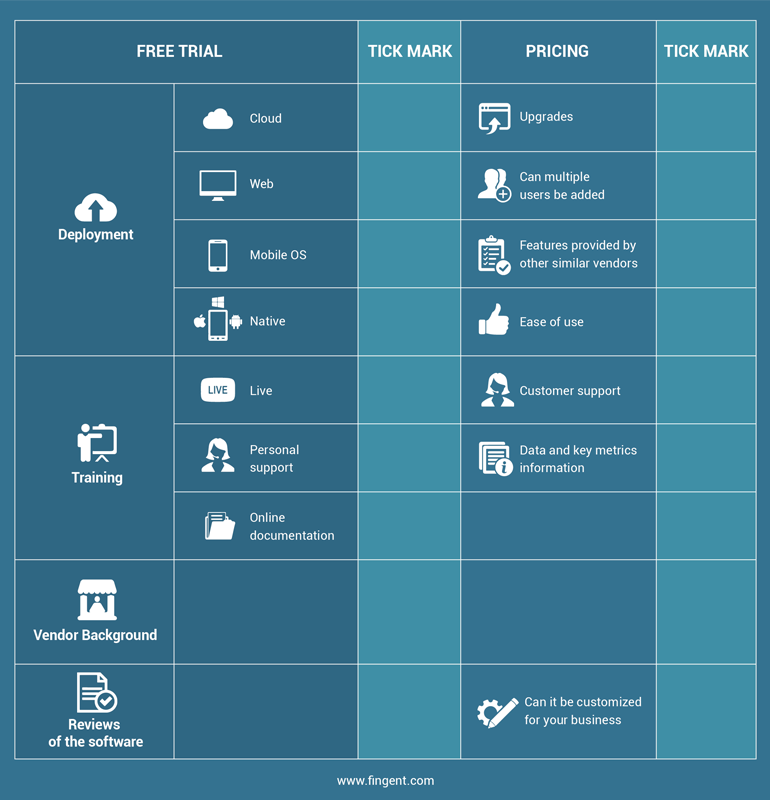
With logistics pushed to the forefront of business operations, leveraging the right technology can make your business compatible with the changing environment.
Outsourcing to a software development vendor will help deploy scalable software for logistics management into your entire supply chain operations. A global software solutions provider like Fingent can give you the advantage of custom logistics solutions built solely based on your requirements.
How logistics software improves efficiency
Logistics management software guarantees more efficiency and control over the logistical and supply chain operations of a business. It means simply substituting the existing manual methods with a software-centric solution. The array of features in a logistics system can refine the entire logistics cycle right from its center. For owners, vendors, and the end customers, using an LSM (Logistics Software management) model opens up improved collaboration, which is the essence of effective logistics management.
Opt for logistics software requires considering all the criteria mentioned above. For a business, it involves addressing their needs and then choosing one that wraps around their existing processes. By integrating an LMS into their operations, companies could reduce their turnaround times and streamline the overall cycle of planning and delivery while keeping up with the customers’ requirements.
Read more: Build or Buy Logistics Software – An End To The Prolonged Discussion
Transitioning into Cloud-Based SaaS: The Future of Supply Chain
With cloud computing gaining momentum in 2021, a whole new way of processing data is unveiled. The tech innovations in 2021 have influenced the supply chain and logistics operations. Increased adoption of supply chain and logistics solutions in 2021 will lead to a shift from the on-premise model to the SaaS model.
Predictions estimate that a subscription-based SaaS model will dominate supply chain management in 2021 and beyond. Adopting a cloud-based supply chain solution offers benefits in the form of flexibility, robustness, and affordability. Free and open-source software adoption has made the Cloud the primary choice for logistics providers and organizations worldwide.
Cloud-based SaaS supply chain solutions offer numerous benefits. It gives a comprehensive outlook on the overall operations in logistics by making processes more transparent and collaborative. Implementing a cloud system reduces the upfront and operating costs. It also offers the ability to scale up with the business needs and enhances supply chain efficiency.
To sum up,
Opting for a logistics solution is one step to simplifying the entire cycle of logistical and supply chain operations. Effective management of each process from procurement to delivery requires a custom logistics management solution that can accommodate each provider’s demands. For instance, an organization lacking an in-house logistics department needs a software management tool that can wrap around their existing methodology and improve it.
By partnering with a vendor specializing in software development, businesses can deploy logistics management software tailored to their requirements. Pioneers in custom software development like Fingent can assist companies from wholesalers to distributors to e-commerce with the advantage of custom logistic solutions. Get in touch with us to spearhead your operations swiftly and efficiently.
Simplify job scheduling and dispatching
Intuitive scheduler to help assign jobs to field agents through simple drag and drop actions based on workload and availability.
Try ReachOutStay up to date on what's new

Featured Blogs
Stay up to date on
what's new



Talk To Our Experts
How does a Warehousing Management System Simplify Operations and Help Your Business Scale?
A Warehousing Management System is a software application that controls and manages the operations in a warehouse. It can either be a standalone system or part of the Enterprise Resource Planning (ERP) system.
Additionally, most consumers today want to buy anywhere and return anywhere. So, businesses must have the ability to respond quickly with Warehousing Management Software that optimizes the fulfillment capabilities.
A modern WMS solution:
- Guides inventory receiving and put-away,
- Optimizes picking and shipping consignments, and
- Advises inventory replenishment.
Simply put, the solution offers visibility into a business’s entire inventory and manages the whole supply chain fulfillment right from the distribution to the store.
While many companies have ERP or Order Management System (OMS) systems that include warehousing functionality, companies can outgrow their warehousing and distribution functionality capabilities by implementing warehousing management software.
In the past, many small and mid-sized companies wanted to increase the functionality of the warehousing management system. However, the entry-level costs were excessive. Today, with cloud-based platforms, the deployment and operational costs have reduced drastically.
Read more: How Transportation Management Systems Benefit Third Party Logistics (3PL) Service Providers
This article discusses the various benefits of a warehousing management system that can support your growing company.
Why is a Warehousing Management System better than a traditional order management system?
There’s no denying that both OMS and ERP systems have warehousing and distribution functions. However, they often lack critical functions such as accepting ASNs (Advanced Shipping Notice) or managing the inbound receiving docks.
Additionally, the traditional system can become obsolete if your company runs several distribution centers. It will not be easy to manage multiple warehouse inventories if you don’t have a warehousing management system. It is also true when retail companies need small parcel shipping for omnichannel commerce like a “ship from a store” or to “manage inventory in stockrooms” in addition to the central warehouse. In such cases, a warehousing management system is a must as they are built from scratch with multiple distribution centers in mind.
A WMS manages activities and functions across the warehouse and will help give you better control over managing the labor to improve the levels of efficiency. Warehouse management software improves inventory visibility, makes it easy to track shipments, monitors expiration dates, and performs cycle counts.
Most OMS and ERP systems are not effective in reporting employee productivity and throughput by job function. The most significant benefit of being barcoded throughout the DC processes or using voice technologies is identifying the work performed by an employee by job function. On the other hand, a warehousing management system improves the company’s gain as the cost of labor increases.
Additionally, most OMS or ERP systems are selected and implemented to improve other departments such as contact centers, accounting, marketing, etc. Warehousing management software will ensure the distribution center organization grows, controls costs, gains efficiency, improves customer service, and extends the life of the OMS or ERP.
Read more: Logistics Management Software – Everything You Should Know
What are the benefits of a Warehousing Management System?
1. Receiving and marking
Typical functions of a WMS include ASN and EDI transactions, carrier scheduling of dock appointments, and receiving and putting-away personnel. Additional functions include:
- Identifying forward and bulk locations after receiving the product and quantity on hand
- Creating barcodes for pallets and carton labels
- Ability to record any vendor or carrier damage claims upon receiving
- The capability of both paper and paperless receiving
- Identifying special processing of product before put-away process
- Eliminating the put-away process by cross-docking from receiving to packing
- Resolving any issues through status reporting of incoming receipts to warehousing and merchandising staff
Quality Assurance(QA):
- Store product specifications for QA
- Support vendor compliance programs and report a vendor scorecard, on-time delivery, errors in shipment and receiving, and more.
- Store vendor, product, SKU sample testing criteria
- Marking direct, retail, and wholesale customer print and ticket formats
2. Put-away
After receiving the inventory, products have to be either cross-docked to packing stations or shipping to fill backorders or put-away. A warehousing management system can help identify storage type, open bin/slot locations, cubic capacity, and more, along with profile characteristics and cube required. Many warehousing management systems will have “directed put-away” options based on products. Storage parameters, system rules, and velocity functions may be available in a few smaller warehouse management systems.
3. Slotting
Slotting products is one of the most significant benefits of warehousing management software. It assigns SKUs to pick locations based on various factors such as size, sales, velocity, weight, category, and more. Sometimes, slotting functionality is available through add-on modules from some WMS vendors at an additional cost.
The slotting functionality reduces picker travel time and recommends changes in bin or slot size requiring less replenishment, thereby improving productivity.
Velocity reporting enables personnel to re-slot primary locations to get more space or change fast-selling items to the “hot pick” slot locations. Advanced operations can use dynamic slotting functionality.
4. Automates restoring of forward pick
A WMS automates refilling of primary or forward pick storage from bulk before the next set of orders is directed to the floor for picking. It reduces warehouse backorder costs and lost time.
Sales velocity data helps plan the size of the forward pick storage according to the item to reduce the number of replenishment tasks. Also, a product’s demand replenishment functions trigger recommended stock movement in an automated way.
Read more: How Robotics in Logistics Helps Improve Supply Chain Efficiency
5. Assembly
Most warehousing management software provides several functions such as work orders, kitting, assembly control of labor and material costs, and more. Other functions such as a single-level bill of material (BOM) or a multi-level BOM and managing component inventory assignment through the work order process are also available.
Other options such as tracking inventory usage and sales at the finished kit and component level, tracking labor usage by work order and assembled product, and also about work in progress reports are available. While ERPs may have a comparable function, it is not the case with OMS.
6. Packing
Packing is as crucial as picking in fulfillment of small parcel eCommerce. To gain customer satisfaction, consider the “pack confirm” verification process in your operations. You can pull aside all missed picks, and incorrect order quantities for correction through the “pack confirm” process. Many warehousing management systems can print-on-demand customer documents, assembly directions, and shipping labels and support the insertion of promotional materials.
Watch video: How custom-developed web app, enabled smarter locker management.
Today, most businesses struggle to keep pace with customer demands. Thanks to the ongoing COVID-19 pandemic, the demand has only increased. At Fingent, we provide you with custom software solutions that streamline business processes and save time and money. We help you develop custom warehousing management software for businesses that deal in logistics, shipping, transportation, eCommerce, third-party logistics (3PL), and more. If you want to discover our services further, please chat with our consultant.
Stay up to date on what's new

Featured Blogs
Stay up to date on
what's new



Talk To Our Experts
The logistics and supply chain market is predicted to experience most complexities this 2021, especially with the COVID-19 vaccine distribution. Here are ways to enable smooth logistics operations, even amidst the chaos!
COVID-19 Vaccine Distribution: A Guide for Logistics and Supply Chain Leaders to Make Strategic Decisions
Crunch time and performing in a crisis – logistics and supply chain leaders are familiar with these challenges. The pandemic recovery mode has turned out to be a whole different ball game for logistics and supply chain service providers. It has thrown them a new and unique challenge in the distribution of the COVID-19 vaccine. Now, the world is looking to those same industry leaders for more strategic decisions and ways to shock-proof the supply chain.
Thus far, most companies have relied on a strategy of low-cost supplies and minimum inventory. However, given the combination of the pandemic, trade conflicts, and harsher natural disasters, they are rethinking such an approach. 2021 is facing one of the most complex logistics and supply chain challenges that we have never experienced in the past. This article shows how logistics businesses can enable smooth operations, especially with the vaccine distribution throughout 2021.
How is COVID-19 vaccine distribution affecting the logistics sector?
According to Jabil’s report on supply chain resilience in a post-pandemic world, the coronavirus disease impacted 78% of respondent supply chains, more than any other disruption over the last decade. Supply chain disruptions are not new, but they are usually contained and short-lived. However, COVID-19 has brought in extraordinary challenges. Here are a few of them:
1. Speed to market
Swift development of the COVID-19 vaccine has a ripple effect throughout manufacturing and distribution. Unlike other vaccines, COVID-19 vaccines need to be shipped under ideal conditions. Speed to market and the need to maintain cold chain integrity will be a big challenge for the supply chain sector.
2. Global and pervasive
Unlike traditional vaccines, the COVID-19 vaccine is not location-specific. Supply chain leaders may encounter challenges as they ship to new customers through unfamiliar trade lanes, using new transport systems. In other words, the vaccine supply chain has to meet the demand on a global scale.
3. Full-scale distribution
The COVID-19 vaccine will have to be distributed full-scale from the start. Given the unfamiliar network, the risk entailed in this process doubles.
These unique challenges are forcing industry leaders to rethink traditional approaches. Those in the supply chain dedicated to the COVID-19 vaccine distribution will need to act in real-time and guide others downstream proactively.
Six stages to enable smooth logistics operations throughout 2021
Post the COVID-19 vaccine release announcement, the public’s attention began to shift from research and development to distribution. And rightly so! Here are six stages that supply chain leaders must focus on while making strategic decisions:
Read more: How to Pick the Right Logistics Management Software
1. Planning is everything
The success of any task starts with proper planning. The supply chain encapsulates the procurement of goods, storage, and delivery to a specific location. With appropriate management of time, transportation, and other parameters, logistics companies can earn maximum profits. Adhering to the schedule helps attain better tracking, quality control, and timely delivery.
Despite good planning, supply chain procedures may encounter some challenges. Supply chain providers need to have a backup emergency plan to manage such unexpected situations.
2. Train for efficiency
The success of the plan is determined by those who execute it. In other words, well-trained staff can have a significant impact on the plan’s success. To this end, the team must be well trained in utilizing modern techniques.
Apart from frequent training sessions, companies can increase their teams’ efficiency through brochures and paper notices posted on the workplace walls. Apart from that, make sure that each employee is aware of the new policies. Educate your staff on how to handle the vaccine shipment so that the handler is conscious of packing and labeling.
3. Keep up with the latest technology
Technology is continuously evolving now more than ever. It is essential to keep up with the latest technology to handle challenges and tackle vaccine distribution demands.
- Artificial Intelligence can assist in providing timely updates regarding the movement of goods.
- It helps the client know the details about the supply, warehouse, and delivery. Automation of such information can save a considerable amount of time for the industry and its clients.
- Automation eliminates human error in tracking, which improves overall process management.
- AI can also assist in managing the account details and employee details.
- Automated warehouses can make sorting, packaging, and organizing vaccines much easier.
- Automated voice bots and chatbots can play a significant role in customer services.
Read more: How SAP Helps Realize Voice-enabled Warehouse Operations
4. Warehouse and inventory management
Effective supply chain management is incomplete without proper warehouse management. Warehouse operations vary according to the product. For example, most vaccines require ultra-low temperatures. Ensure that your current warehouse facility is capable of stocking the vaccine at appropriate temperature levels. Proper warehouse inventory will ensure minimum wastage of goods.
Moreover, using vertical storage columns can maximize storage capacity. Implementing efficient tracking software allows warehouse personnel to locate products quickly.
Implementing logistics software solutions or applying robotics logistics such as robotic palletizing, packaging, and automated picking can modernize warehouse operations, improve health and occupational safety in the warehouse premises, reduce physical contacts between workers, and increase efficiency fulfillment.
5. Improved transportation
Efficient transportation can decrease expenses and speed up the delivery of vaccines. Determine the shortest and safest delivery route. Optimize the packaging to reduce the weight of the package and the volume.
The pandemic has accelerated digital shopping. Last-mile delivery has become more critical than ever before. The use of technology can help logistics managers optimize that last-mile and help them keep their customers updated.
Read more: How Robotics in Logistics Helps Improve Supply Chain Efficiency
6. Analyze and improvise
Integration of feedback and analysis makes any logistics network complete and optimal. Predictive data analytics can help industry leaders learn from what happened and improve in the future. You can use it to get a detailed understanding of what caused delays in your supply chain. Once you identify those bottlenecks, you can boost the productivity of your logistics business and efficiency on your future trips.
Building supply chain resilience
Just as the coronavirus spread from place to place, the vaccine must follow suit to support a global recovery. However, the vaccine’s possible routes are determined by the cold chain. Some areas do not have the option of freezer storage. Local logistics and supply chain leaders must ensure that these communities have access to the approved vaccines.
Location intelligence and technological advantage help leaders determine where vaccines need to go and how to get them there. For most logistics firms, the pandemic seems to be a trial-by-fire. By implementing responsible strategies, you can build resilience in logistics and supply chain practices.
To fulfill the increasing demand for last-mile delivery, logistics companies must strengthen smart tech investments and build healthy partnership ecosystems. Fingent is closely monitoring the situation and helping businesses return to work with our technology consulting and innovation capabilities. Contact us, and let’s get you started.
Stay up to date on what's new

Featured Blogs
Stay up to date on
what's new



Talk To Our Experts
SAP helps increase warehouse management productivity with voice picking!
Voice technology has been there for a while and is here to stay. Its increasing adoption among warehouse distribution centers has led to increased accuracy, improved productivity, and training time reduction. Supply chain executives report attaining a 50% decrease in picking errors and a typical ROI in less than one year with voice integration.
In retail warehouses, complex facilities such as inventory control are vital, with several picks to be performed every hour. The warehouse employees should be an efficient and accurate while ‘picking’ as wrong picking can lead to incorrect deliveries and affect customer satisfaction.
To improve staff accuracy and speed of pick, warehouses can consider “Voice Picking” technology. Voice picking is an extension of the Warehouse Management System (enhanced by additional software and hardware) that allows transferring instructions to the warehouse operators using earphones and microphones. Voice Picking uses a wearable computer that includes a headset and microphone so that the order pickers can be instructed on what items to pick from where and later confirm their actions verbally into the Warehouse Management System (WMS).
Read more: How Robotics in Logistics Helps Improve Supply Chain Efficiency
Benefits of Voice-picking
A voice-picking system creates a hands-free, heads-up workflow. Unlike the traditional warehouse order picking, where you need to stop to read, scan, or punch keys, the voice-picking system allows users to listen and speak efficiently. Some of its benefits include:
- Productivity improvement
- Reduction in errors by 25% or more
- Decrease in accidents as operators rely on eyes and hands-free technology and hence are more aware of the surroundings
- Cuts training time
How is voice-enabled warehouse operation helping during the COVID-19 pandemic?
In the last few months, warehousing and logistics have been hit hard. While there was enormous pressure on the warehouse to execute deliveries quickly due to increasing customer expectations, COVID-19 has caused further disruption.
Logistic companies have had to evaluate options and make changes across transportation modes, considering delays, interruptions, and price changes.
According to a survey from August to September 2020, about 32,200 jobs were added to the warehouse and storage sector. Thanks to voice and device technology! Voice integration helped address the labor shortage and equipped new workers. Here are a few benefits of voice-enabled warehouse management.
1. Efficient onboarding
New workers can pick up their barcode scanner or mobile device and begin their work with minimal onboarding time. Latest device upgrades offer improved designs and user-friendly interfaces. Whether a Windows 10, iOS, or Android device, workers can choose the device they like. This flexibility helps simplify the training and onboarding process of new workers, optimizing workforce management, and making it a more efficient experience.
New workers can get started quickly without the need for lengthy training processes. With voice-enabled applications, you can reduce the training time from several hours to just a few minutes.
2. Increased productivity
Voice capabilities are helping workers to keep pace with the high volume of orders. It helps them cope with the increased pressure to meet soaring demands, reduce training time, and use the hand-held devices of their comfort.
3. Higher accuracy
With hands-free wearables and voice picking, workers don’t need to stop frequently to check their devices. It will reduce errors and allow pickers to complete more orders within the same timeframe with improved speed and accuracy.
4. Improved safety
The coronavirus has made “contactless” mandatory. Voice picking can eliminate many physical touchpoints that can lead to virus exposure. Minimizing surface contact is one of the best ways to protect warehouse workers.
Read more: Contactless services: The new retail norm
How does SAP help voice-picking?
SAP’s open architecture supports several voice integration methods that help users achieve immense productivity and accuracy. If your business is running on SAP’s Extended Warehouse Management (EWM) solution or Warehouse Management (WM), voice can be easily integrated. It results in the seamless integration of ERP with your warehouse management solutions and voice. Ultimately, the accuracy, productivity, comfort, and safety of all your warehouse processes will improve. It helps distribution centers deliver on time, achieve deadlines, and scale.
Read more: SAP Preconfigured Solutions Boost Efficiency Among Industries
Today, voice integrated into SAP has become an essential tool for many businesses. SAP’s voice picking provides superior ergonomics, eliminates distractions, and allows users to focus on the task. The voice technology is specifically designed to provide voice recognition in noisy environments. The noise cancellation ability helps lower warehouse background noise, such as truck horns, pallet drops, and conveyor system mechanism.
Additionally, the technology helps overcome language barriers as most systems come in more than 40 languages allowing users to interact with SAP most naturally and effectively.
Voice with SAP can quickly scale with your business both when your business grows and when you need to accomplish seasonal peaks. With SAP’s explicit instructions, you can add new employees’ onboarding time and capacity without any complex changes to the given infrastructure.
Download Our Case Study: How Fingent automated integration between SAP SuccessFactors and SAP S/4HANA
To conclude
As the economy battles to overcome uncertainty, using safe, cost-effective solutions, embracing advanced technologies like voice-enabled applications are imperative to sustain. Additionally, with COVID-19 showing no signs of ending soon and the world shifting to contactless shopping, embracing voice-enabled applications makes sense from an economic and physical safety standpoint.
No other technology has impacted the logistics and shipping industry like voice in the recent past. Extend your logistics and fulfillment processes by making voice technology a vital ingredient of your company’s IT strategy. Contact us now to get started.
Stay up to date on what's new

Featured Blogs
Stay up to date on
what's new



Talk To Our Experts
Robotics in Logistics: Dawn of a New Era
Since the advent of e-commerce, getting goods to the customer’s door or stores from the factories or warehouses has become a mammoth task for logistics companies. Forecasts say that “worldwide warehousing and logistics robot unit shipments will increase to an estimated 620,000 units annually by 2021.” The solution for this herculean task of transporting goods far and wide thus becomes apparent: the dawn of robotics in logistics. The use of robotics in logistics offers far greater levels of uptime over manual labor, bolstering productivity in a vast array of professional environments.
Retail giants like Amazon and Walmart that have already deployed robots in their warehouses and fulfillment centers will only expand their deployments, especially in the wake of current situations. Leveraging robotics in logistics cuts around 70% of warehouse labor costs and helps businesses function day and night with minimal costs. Want to find out how? This post will help you understand the importance of utilizing warehouse robotics in the supply chain.
A Surge in Warehouse Robotics in Supply Chain
The first robot in the supply chain was capable of moving material about a dozen feet. For several years, robots were used only in industrial manufacturing because it was not safe for people to be around them. However, over the last few decades, innovative logistic robotic companies have worked hard to mesh AI and machine learning, better sensors and response capabilities, warehouse management software or logistics management software.
Recently, warehouse robotics in the supply chain has picked up pace exponentially. There has been huge funding and investment in the industry. For example, Alibaba invested $15 billion into robotic logistics infrastructure and Google invested $500 million into automated logistics for JD. It is also estimated that the global market for warehouse robotics in the supply chain is projected to reach a market value of $22.4 billion by the end of 2021.
Evidently, the dawn of robotic logistics is right here now!
Read More: How Robotic Process Automation Is Revolutionizing Industries?
What is Robotic Logistics?
The logistics industry is what is holding our modern world together. It includes a huge amount of different processes. Ordering, transportation, warehousing, picking, packing, delivery, inventory, and routing are just a few of those processes.
So, robotic logistics means the application of robotics to one or more of these processes. A few common robotic applications are robotic palletizing, robotic packaging, robotic picking commonly used in warehousing or any other logistics software solutions.
So, what kind of robots could be useful for your warehouse?
Warehouse Robotics in Supply Chain
1. Autonomous Mobile Robots (AMR)
AMRs use sophisticated sensor technology to deliver inventory all over the warehouse. They do not require a set track between locations. They can understand and interpret their environment through the use of maps, computers, and onboard sensors.
These warehouse robots are small and nimble with the ability to identify the information on each package and sort it with impeccable accuracy. They cut down on the redundant manual process which is prone to human error.
2. Aerial Drones
Aerial drones aid in optimizing warehouse inventory processes. They can quickly scan locations for automated inventory. They can scan inventory much faster than a human can and send an accurate count immediately to your warehouse inventory management software.
These drones do not need markers or lasers to guide them. They don’t take up valuable space in your warehouse. They can travel quickly and assist in hard-to-reach areas.
3. Automated Guided Vehicles
Automated guided vehicles and carts (AGVs and AGCs) transport inventory around your warehouse following a track laid in your warehouse. These warehouse robots are perfect for larger warehouses because it reduces the time spent by workers just moving from one area to the next.
4. Automated Storage and Retrieval System (AS and RS)
Automated Storage and Retrieval Systems are robot-aided systems that can place or retrieve loads from set storage locations. AS and RS differ depending on the system needed, the type of task, or the goods that they will be working with. They can be programmed to work as a craft that moves and works on a well-defined path or a crane that retrieves goods between aisles. There are also aisle climbing robots that retrieve customer orders.
These free up the time of workers who can then concentrate on more complicated processes such as packing and posting the goods.
Read more: What Are Cobots and How Can They Benefit Industries?
What is Driving the Need for Collaborative Robots in Logistics?
Although there has been a boom in logistic robotics, there are two specific factors that are driving the current need for collaborative robots in logistics.
- The growth of e-commerce: When products are directly shipped to customers, there is a huge variety of different packing requirements.
- The lack of available workforce: Shortage of skilled workers can affect logistics.
What are the Benefits of Adopting Robotic Logistics?
The logistics industry can see many tangible and clear benefits of adopting robotic logistics.
- By reducing human errors, robotic logistics can bring in significant profits and can also reduce warehouse costs.
- Robotics can allow for workforce adaptability.
- Robotic logistics improve safety for workers by taking over dangerous jobs such as getting items from high racks or storage spaces.
- Reduced human error and increased delivery speed brought about by robotic automation will increase customer satisfaction.
Read more: Open source robotics process automation
Enjoy the Freedom To Do More
Robots are being used rather extensively in logistics. Due to the complexity of supply chain processes robots will be increasingly used for dull, dirty, and dangerous tasks freeing your workers for more complex tasks. This means cost-effective, fast, and error-free operations. If you want this for your business, get in touch with us immediately and let us fix your business up with robot power.
Stay up to date on what's new

Featured Blogs
Stay up to date on
what's new



Talk To Our Experts
Focused Industry Templates and Automation In SAP
Focused industry templates and automation in SAP can radically cut the time and effort required to transform the systems of various industries. Modern solutions that integrate business functions, data management and financial management can facilitate various industries. Recognizing this massive potential, both big and small industries are adopting industry-specific solutions. This article discusses in detail how industry-specific templates can benefit verticals such as healthcare, retail, logistics, utilities, and media.
Understanding Templates for Industry Specific Verticals
A standardized, industry-specific vertical approach is a fast and cost-effective way to implement an ERP solution.
Related Reading: Unlock the Potential of Intelligent Enterprise with SAP Leonardo
When Do We Need Templates?
You need templates when your work is repetitive, such as filling in a monthly report. This speeds up mundane tasks and ensures accuracy and uniformity across all the reports. A business that performs the same functions across different locations would benefit from an industry-specific template.
How Does It Work?
Building an industry-specific template would require a typical implementation approach: gather, analyze and document the requirement. This is done in phases such as planning and blueprinting. Then it is tested and confirmed by the business before it is deployed across the organization.
If different parts of the organization work differently, there is no need to create a new template from scratch. SAP industry-specific templates allow you to create a version of the existing template to handle the task.
Related Reading: Create Intelligent Organizations with SAP Model Company
What Are the Benefits of Industry Focused Templates and Automation?
- Allows businesses to achieve quick return on their investments.
- Minimizes ERP implementation expenses.
- Minimizes or avoids risks such as budget overruns.
- Allow you to control projects more accurately and easily.
- Give you the ability to repeat and refine processes.
- Enables you to apply the best practices to the next project.
Five Specific Industries That Facilitate Focused Industry Solutions
Many industries are looking for expert IT partners with a focused approach in providing industry-specific technology solutions. Here are examples of five specific industries:
1. Healthcare
Throughout a patients’ journey in the healthcare lifecycle, the healthcare industry can leverage focused industry solutions to proactively approach the patient and provide individual, personalized content increasing patient satisfaction and building patient loyalty. With SAP industry templates, healthcare can increase efficiency with insight into costs and outcomes, improve customer experience and improve risk and compliance management.
SAP solutions increase workforce engagement, agility, and overall results. By means of invoice-to-pay, invoice-to-cash, and other features, the healthcare industry can enable their departments to collaborate efficiently.
2. Retail
Today, it is critical for businesses to treat customers as they want to be treated. This is possible only by customizing their experience and selling to them in a personalized way. SAP solutions are suitable for both small and large enterprises. It can be mapped for all company techniques and scenarios, and business features. Since they are exceedingly customizable, SAP solutions are best utilized for business strategies involving seasonal goods. Aggregates and indexes can be replaced by central tables ensuring that steps are transparent from order-to-delivery.
3. Logistics
Certified SAP focused industry templates and automation simplifies the process to avoid the need for designing a full business process from scratch. This can double the performance speed by accelerating user productivity and reducing frustration. It can also eliminate the use of printed paper, reducing your carbon footprint and costs. Automation in the logistics industry leads to faster decisions and instant actions.
4. Utilities
Utility firms undergo substantial changes across the world. This increases competition, thereby putting immense pressure on utility companies to provide a high degree of customer satisfaction. SAP solution templates and automation helps them by providing operational efficiency, steering utilities to their desired destination and beyond with minimum expense. It can also reduce implementation effort and time, thus realizing a higher ROI for the industry.
5. Media
Media industries such as newspapers, television, and internet-based social media applications face the challenge of delivering information at the right time to attract their target audience. Implementation of SAP solutions will ensure that all service processes are handled efficiently. It can help in better planning of which information should be broadcast at what time. SAP-based solutions enable the media industry to make instant changes and take quick action according to an on-going scenario. Such agility can provide better commercial outcomes for the industry.
Related Reading: SAP Preconfigured Solutions Boost Efficiency Among Industries
It’s the Right Move!
Agility, quick ROI, streamlined processes – what are you waiting for? Businesses are moving on to Focused Industry Templates and Automation as we speak. Fingent has helped many of these businesses with a host of SAP services that help to improve operational efficiency. Give us a call and let’s get talking.
Stay up to date on what's new

Featured Blogs
Stay up to date on
what's new



Talk To Our Experts
What are preconfigured solutions?
SAP Preconfigured solutions are implementations featuring standard functionality or common patterns. Since they include common enterprise features such as supply chain, finance, and inventory management, preconfigured solutions can be deployed rapidly. In simple terms, SAP preconfigured solutions are simple, ready-to-consume solutions that adapt to your business needs.
SAP Rapid Deployment Solutions allows the development of preconfigured solutions for specific functional areas, complete with pre-built reports, preconfigured content, and predefined best practices. Such suites enable enterprises to deploy software easily, with accelerated implementation times, and predictability in cost and scope.
Each preconfigured solution is a complete, end-to-end implementation. Enterprises may adopt it as such, or use it as a base for developing a full-blown customized solution. Open source solutions allow enterprises to download the source code and customize the solution.
Traditional preconfigured solutions came on-premise. The SAP HANA Enterprise Cloud heralds the cloud version of preconfigured solutions.
Related Reading: What is Business Process Expertise in SAP and Why You Need it
How preconfigured solutions enhance industry operations?
Preconfigured solutions spare enterprises from “rediscovering the wheel.” When solutions exist for standard requirements, it avoids the wastage in development efforts. Preconfigured solutions save time, trial-and-error, and labor. The in-built accelerators allow rapid implementation and configuration. The shortened time to market delivers a competitive advantage to firms.
A preconfigured solution offers a working model with glitches removed. These solutions connect key functional areas, to streamline operations and improve communication flow across departments. It automates routine and repetitive functions and offers well-structured content that improves visibility into key fields.
SAP offers built-in support for industry best practices. Solutions developed using SAP combines the latest technology, industry best practices, and processes in a single package.
Developers using SAP to build preconfigured solutions can adopt a modular and scalable approach. They mix modules to create targeted solutions such as CRM, field management suite, ERP and more. Clients may choose the most relevant reporting tools for their reports using SAP Business Intelligence Adoption rapid-deployment solution. SAP Predictive Analytics Content Adoption rapid-deployment solution helps to implement a predefined predictive analysis use case.
Transforming various industry verticals
Preconfigured solutions deliver efficiency improvements in several industries and verticals. Five of them are mentioned below:
1. Real Estate
Unstandardized information, inefficient processes, and weak communications often affect the real estate industry. Preconfigured solutions enable enterprises to streamline data and workflows.
Developing preconfigured solutions for key functional areas of the real estate industry allows business owners to access information in real-time, prevent opportunities from slipping through the cracks, and remain in control of the business. Here are a few key functional areas where pre-configured solutions can come to the rescue of real estate enterprises:
- Document management with powerful search and sort functionality.
- Process automation functions to streamline operations.
- Contact maintenance to keep track of customers and upcoming tasks.
- Reporting and analytics to generate and share data and other critical information.
2. Supply Chain and Logistics
Preconfigured solutions make the complex supply chain relationships simple and easy to handle. SAP’s Model Company for supply chain planning offers a ready-to-run, comprehensive solution, complete with relevant business content, accelerators, and enablement services.
The suite co-opts:
- Demand planning to manage demand streams and increase productivity.
- Response and supply planning.
- Supply and allocation planning.
- Deployment planning.
- Sales and Operations planning.
The inbound and outbound integrations with SAP S/4HANA ensures seamless integration with other functional areas, such as sales. Businesses gain improved visibility to the upstream and downstream business value chains and can visualize the entire supply chain network. The preconfigured solution aligns demand and supply plans with financial targets and key performance indicators.
Related Reading: Seamlessly migrate to S/4HANA with these tools and methodologies
3. Healthcare
The healthcare industry is under pressure to innovate while keeping up with regulations. Preconfigured solutions automate regulatory concerns and compliance. Ready-to-run process models and scenarios enforce standardization with tight quality controls. It improves efficiency in research and development. Accelerators support rapid design and implementation.
The most popular modules of SAP’s preconfigured solutions in healthcare are meant for:
- Research and development
- Production
- Regulation
- Quality and traceability
- Logistics and transport
- Purchases and provisioning
- Marketing and commercial
4. Sales and Marketing
SAP preconfigured solutions infuse efficiency to customer-facing functions and increase customer satisfaction. Its most popular implementations in the sales and marketing domain include:
- Predicting customer demand based on real-time data.
- Tracking sales history.
- Automating sales operations. The solution tracks all processes, from ordering of raw materials till the delivery, and takes care of auditing, notifications, and reporting.
5. Financial Services
The SAP Model Company solution for Financial Services offers a ready-to-run, comprehensive solution to support the core financial processes, including:
- General accounting
- Cash and treasury functions
- Planning and forecasting
These preconfigured solutions come with relevant business content for a specific use-case, accelerator, and enablement service. These solutions enable gap analysis, address resource bottlenecks, and support lean implementations.
Today’s enterprises seek efficiency improvements and cost savings without compromising quality. Fingent uses SAP to build pre-configured solutions that enable enterprises to realize such goals. Implementing these custom-built pre-configured solutions helps you transform your processes across various business areas and improve your customer relationships.
Contact us to get a free consultation with our SAP Experts.
Stay up to date on what's new

Featured Blogs
Stay up to date on
what's new













